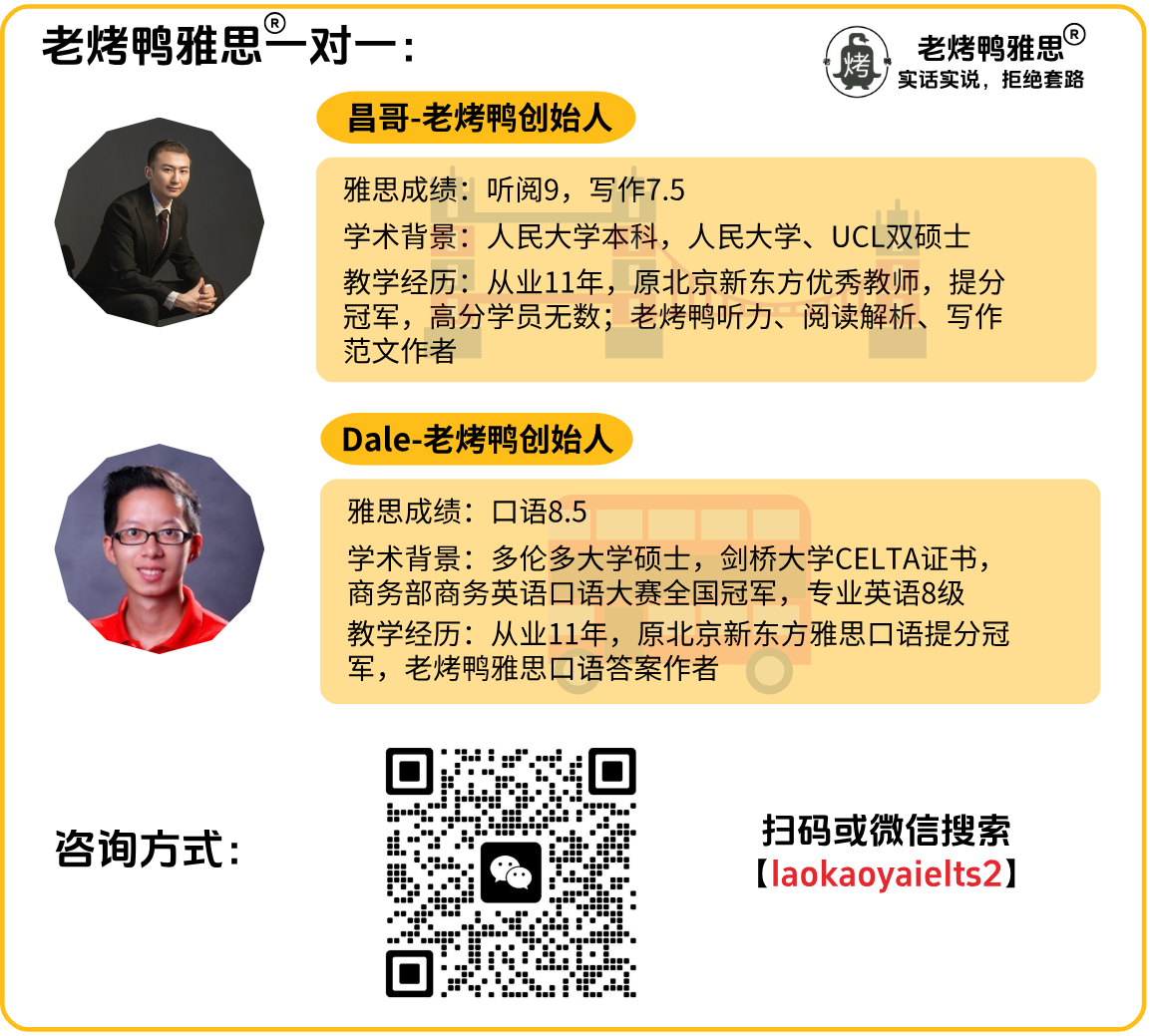剑桥雅思7 Test 2 Section 3听力原文与答案 Antarctic Centre
这篇雅思听力Section 3介绍了新西兰南极中心的情景。就内容上来说,它其实更加贴近Section 2景点介绍场景,而非Section 3的学术讨论。易错点的话主要是第22题,A选项作为正确选项,同义替换幅度太大。做题的时候更多的是通过排除B选项和C选项才确定的答案。
点击查看这篇雅思听力中需要大家掌握的重点词汇与答案解析:
雅思备考听力篇 剑7 test 2 section 3雅思听力高频词汇
剑桥雅思7Test2听力Section3答案解析 Antarctic Center
剑7 test 2 Section 3雅思听力原文
INTERVIEWER: We’re pleased to welcome Dr Martin Merrywhether of the Antarctic Centre in Christchurch, New Zealand who has come along to talk to us today about the role of the Centre and the Antarctic Treaty.
INTERVIEWER: Now my first question is about the choice of location for the centre. Why Christchurch? Was it because of the climate?
DOCTOR: Well actually New Zealand is the second closest country to Antarctica and Christchurch is often used on Antarctic expeditions. Q21
INTERVIEWER: Right, so it’s because of where we are… coupled with our historical role. So tell us – what is the main purpose of the centre?
DOCTOR: Well… we have two complementary roles. One is as a scientific base for expeditions and research and the other is as an information centre.
INTERVIEWER: Tell us something about the role as a scientific base.
DOCTOR: We’re able to provide information about what scientists should take with them to the South Pole – for example, the centre contains a clothing warehouse where expeditions are supplied with suitable clothing for the extreme conditions. Q22
INTERVIEWER: I suppose you need a bit more than your normal winter coat!
DOCTOR: Yes, exactly and then there’s also the specialist library and mapping services.
INTERVIEWER: Right. And which countries are actually located at the centre?
DOCTOR: Well… the centre houses research programmes for New Zealand, for The United States as well as for Italy… there’s even a US post office at the American airforce base here.
INTERVIEWER: Really? And what does the visitor’s centre offer?
DOCTOR: Well, since very few people will ever experience the Antarctic first hand, the visitors’ centre aims to recreate the atmosphere of Antarctica. There’s a mock camp site where you can see inside an Antarctic tent and imagine yourself sleeping there. And the centre also acts as a showcase for the unique international co-operation which exists in Antarctica today. Q23
INTERVIEWER: What is it actually like at the South Pole? I know you’ve been there on a number of occasions.
DOCTOR: Yes, I have and each time I’m struck by the awesome beauty of the place. It’s magnificent but you can really only visit it in the summer months. Q24
INTERVIEWER: October to March.
DOCTOR: Yes, because it’s completely dark for four months of the year (pause)… and in addition it has to be the coldest place on earth.
INTERVIEWER: Colder than the North Pole? Why’s that?
DOCTOR: Well, unlike the North Pole, which is actually a frozen sea, Antarctica is a land mass shaped like a dome, with the result that the winds blow down the slopes at speeds of up to 150 km an hour and that’s what makes it so cold. And one other interesting thing is that Antarctica is the driest continent on earth, surprisingly, and so you have to drink large amounts of water when you’re there. Q25
INTERVIEWER: How old is Antarctica?
DOCTOR: We’re pretty sure it was part of a larger land mass but it broke away from the rest of the continent 170 million years ago.
INTERVIEWER: How can you be certain of this?
DOCTOR: … because fossils and rocks have been discovered in Antarctica which are the same as those found in places such as Africa and Australia. Q26
INTERVIEWER: Amazing… To think that it was once attached to Africa…
INTERVIEWER: Now let’s just have a look at the Antarctic Treaty. How far back does the idea of an international treaty go?
DOCTOR: Well, as far back as the 19th century, when eleven nations organised an international event.
INTERVIEWER: When was that exactly?
DOCTOR: In 1870. And it was called the Polar Research Meeting. And then, not long after that, they organised something called the First International Polar Year.
INTERVIEWER: And that took place when exactly?
DOCTOR: Over two years from 1882 to 1883. But it wasn’t until the 1950s that the idea of an international treaty was proposed. And in 1959 the Treaty was actually signed. Q27 Q28
INTERVIEWER: What do you see as the main achievements of the treaty?
DOCTOR: Well, firstly it means that the continent is reserved for peaceful use. Q29
INTERVIEWER: That’s Article 1, isn’t it?
DOCTOR: Yes…
INTERVIEWER: That’s important since the territory belongs to everyone.
DOCTOR: Yes but not as important as Article 5, which prohibits any nuclear explosions or waste disposal. Q30
INTERVIEWER: Which is marvellous. Well, I’m afraid we’re going to have to stop there because I’m afraid we’ve run out of time. Thanks for coming along today and telling us all about the centre and its work.
剑7 test 2 Section 3雅思听力答案
21. B
22. A
23. C
24. B
25. A
26. B
27. 1882-1883
28. signed
29-30. AD




